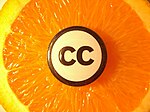Practice development
This page is a practice development page to use to test integration on our Moodle site.
Unless otherwise noted the following material is adapted from:
Little, I., Kornhaber, D., & Palacios, A. (2014, December 03). Open CTE Resources: Educator's Guide . OER Commons. Retrieved December 03, 2014, from https://www.oercommons.org/authoring/6528-open-cte-resources-educator-s-guide.
I will use it as the basis for to practice developing a small micro course on Wikieducator and try to export to Moodle.
Contents
Introduction
This micro course is intended to provide a brief overview of Open Education Resources (OER) and possible contexts within the University.
|
After reading this subsection, you will
|
| Recent research supports the notion that interactive digital content enhances student learning by allowing students to be the architects of their own learning experience.
|
A working definition
|
A commonly cited definition, promoted by the William and Flora Hewlett Foundation, contends that OER are “teaching, learning, and research resources that reside in the public domain or have been released under an intellectual property license that permits their free use and re-purposing by others.” |
The concept of re-purposing is critical to this definition as educational materials are most effective when they are customized and contextualized. Customising OERs provides:
- a tremendous opportunity to create, share, and learn from one another.
- for sharing between educators without fear of copyright infringement.
- “remixed” materials to contextualise the resources.
|
A University of Colorado study [1] found that students utilising highly interactive OER simulations were three times more likely to master a complex scientific concept than those exposed to traditional classroom instruction. |
Sample OER video embedded examples
This video signpost is sourced from [2]
Stephen Downes works for the National Research Council of Canada where he has served as a Senior Researcher, based in Moncton, New Brunswick, since 2001. Affiliated with the Learning and Collaborative Technologies Group, Institute for Information Technology, Downes specializes in the fields of online learning, new media, pedagogy and philosophy. Downes is perhaps best known for his daily newsletter, OLDaily, which is distributed by web, email and RSS to thousands of subscribers around the world. Stephen is a popular speaker, appearing at hundreds of events around the world over the last fifteen years.
|
The OER Lifecycle
The OER creation process is a complex one and should take account of your pedagogical approach including answers to the following questions:
- Will your learners interact with the content at home or in-class?
- Will you supervise leaner interaction or will they complete it independently?
- Will the OER include features such as student tracking or embedded assessment?
The following information is sourced from the OER Educators Handbook [3]
The OER life cycle begins with a desire or need to learn or teach something. The following sequence of steps illustrates a typical development process.
- Find: start by looking for suitable resources which contribute to meeting the need or satisfying the desire. This may include using general search engines, searching specific repositories and finding individual websites. Some potential components may be available offline, including last year's lecture notes, class projects, handouts for learners and other resources prepared previously.
- Compose: with a collection of resources at your disposal, start piecing them together to form a learning resource for yourself, your fellow educators and/or learners. This is a creative design process of building an educational resource from scratch and/or using components you have found.
- Adapt: while composing OER, it will nearly always be necessary to adapt components to your local context. This may involve minor corrections and improvements, remixing components, localization and even complete rework for use in diverse contexts.
- Use: the actual use of OER in the classroom, online, during informal learning activities, etc.
- Share: once an OER is finished, make it available for the open education community to re-use and begin the life cycle again.
Licensing also plays a role throughout the life cycle.
This life cycle applies to the development of an individual OER as well as large OER projects. Each of these stages have their own unique considerations. Although the life cycle follows a logical progression, it is not necessarily followed sequentially in practice. Some parts, such as adaptation, can be done simultaneously with other parts or out of order.
|
Research the OER life cycle and describe how you would address quality, and accessibility requirements when using OER in your course. You should carefully consider issues of file format, mode of access, and licensing of the components.
|
Context
It is important to consider where OER fits into your instructional model. You might use OER to address a particular gap in the curriculum or you might use it to supplant a textbook. Your technical considerations will largely be dependent upon why students access the content and where the access takes place. Key questions include:
- Where will students interact with the content?
- Will their interaction be facilitated or independent?
- What type of technology is available?
References
- Education Strategic Plan. (2010). Retrieved from http://www.hewlett.org/uploads/documents/Education_Strategic_Plan_2010.pdf
- Kawachi, P. (2013). Quality Assurance Guidelines for Open Educational Resources: TIPS Framework. Retrieved from http://cemca.org.in/ckfinder/userfiles/files/OERQ_TIPS_978-81-88770-07-6.pdf
- College Enrollment and Work Activity of High School Graduates. (2013). Retrieved from http://www.bls.gov/schedule/archives/all_nr.htm#HSGEC
- Evidence Flow. (2014). Retrieved from http://oermap.org/evidence-flow/
- 5Pros and Cons of Using OERs for Instruction. (May 30, 2014). Retrieved from http://libguides.umuc.edu/content.php?pid=98930&sid=742401
- Developers and Publishers. (2014). Retrieved from http://www.corestandards.org/developers-and-publishers/
